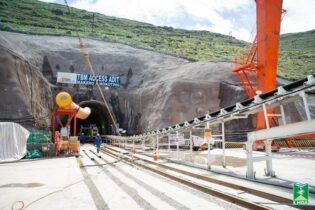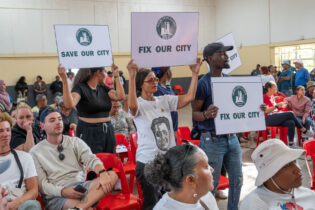by Dr Sumetee Pahwa-Gajjar
Businesses that strive to be environmentally sustainable must find better ways to measure and reduce their carbon footprint. Organisational goals for environmental performance areas, including the aim of carbon neutrality, and sustainability reporting are not sufficient catalysts for change. What is required is an integrated corporate resilience framework for building enterprise resilience and ecological sustainability. This interdisciplinary tool captures strategies towards lower carbon emissions alongside other performance areas, addresses the multifaceted challenge of corporate environmental sustainability, and assists businesses to reduce their overall environmental impact. Moreover, it pinpoints deep, ecological drivers for strategic decisions in corporate practice areas of environmental performance and exposes the strategic weakness of some strategies in terms of building long-term corporate resilience. Spier Holdings, a well-known wine and leisure business outside Stellenbosch, South Africa, may serve as a case in point. In 2009, Spier initiated an in-house project to calculate the carbon footprint of one bottle of wine, as well as the carbon and water footprints of the business itself. In the same year, Spier allowed the School of Public Leadership at Stellenbosch University access to its business operations and environmental reporting practices to help track its progress towards environmental sustainability. Spier has established sustainability as a brand identity, declared carbon neutrality as a macro-organisational goal in response to the global challenge of climate change, and sought scientifically and technologically appropriate ways of addressing this challenge. When viewed from a complexity and systems perspective, Spier is made up of flows of energy, waste, water and information, which are found across the individual business units of winemaking, leisure and farming. As a human environment system, the business responds simultaneously to social, economic and environmental drivers. It also responds to external risks related to natural resources (such as biodiversity and water), physical infrastructure (for sewage or electricity) and knowledge networks. Spier has instigated some commendable initiatives. A trigger matrix system that switches off geysers in unoccupied sections of the Spier hotel, for instance, was installed soon after the 2008 electricity blackouts in South Africa. At the same time, an energy audit of the main buildings was also commissioned. Sizeable investment in a biological wastewater treatment plant on the estate was made to improve the system in line with government regulations. Over the past decade, Spier has continued to explore ways to generate clean energy on-site. In the process, it has increased its knowledge in the field of renewable energy. However, the risk of huge capital outlay in a technology that may soon become obsolete or redundant has discouraged actual investment.Five years ago, the director for sustainable development at Spier, Tanner Methvin, developed 10-year macro-organisational goals for environmental sustainability, including carbon neutrality, zero wastewater, zero solid waste, water sustainability and nature conservation. As the target date to reach these goals neared the midway mark, Spier management spun off several processes to ensure that the business was moving well towards meeting them. The processes included group environmental reporting, such as the calculation of business and product carbon and water footprints.
Carbon footprint calculation is fraught with scientific ambiguities linked to issues of scope and lack of access to information. It is biased towards savings in electricity consumption and may not capture investments made by a business in conserving nature, raising ecological awareness among its employees, or exploring alternative technologies. Water footprints can be tested with scientific rigour, but this requires extensive information about a production process and highly analytical skills for calculations. Most importantly, a business may not have control over large sections of a production process (such as the generation of grid electricity in South Africa), which impacts on carbon or water footprint. The managers did not realise that not all the investments and innovations that had been made towards environmental sustainability could be captured in accounting-based goals. Therefore, a compost site, which uses organic waste generated on the estate and supplies neighbouring farmers with organic fertiliser, could not be factored into a reduced carbon footprint. Neither could the indigenous trees and plants that are slowly replacing alien vegetation, or a strategic decision to convert 25% of the estate to natural wetlands. The case of Spier demonstrates that businesses in the developing South, which aspire to confront challenges such as climate change and water scarcity, should invest in appropriate and affordable technologies, conserve energy and water, and establish reliable knowledge networks. These will build business resilience in the face of unforeseen shocks and resource uncertainties in the future. It is therefore more important to understand the business and its needs from a strategic, resilience-building perspective than to focus on accounting-based and marketing-led terms such as being ‘carbon neutral’. Designed on the basis of Spier’s sustainability story, the corporate resilience framework has wider applicability and can assist other similar-sized businesses to reconfigure their relationship with nature.








